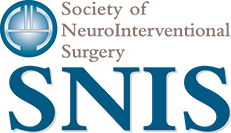FOR IMMEDIATE RELEASE: May 16, 2022
CONTACT: Camille Jewell, cjewell@vancomm.com or 202-248-5460
Fetterman, Van Hollen Strokes Highlight Need for Quick Triage, Thrombectomy Access
Experts available to discuss how all patients can act to survive and thrive after ischemic stroke
FAIRFAX, VA — Following statements by Pennsylvania Lt. Gov. and Senate candidate John Fetterman and U.S. Sen. Chris Van Hollen (Md.), who both experienced strokes over the weekend, the Society of NeuroInterventional Surgery (SNIS) and its Get Ahead of Stroke® campaign are urging state policymakers to update stroke protocols so that all patients have access to lifesaving thrombectomy while stressing the importance of calling 911 at the first sign of stroke symptoms.
“On behalf of the membership of SNIS, we wish Lt. Gov. Fetterman and Sen. Van Hollen a quick and complete recovery,” said SNIS President Michael Chen, MD.
Many details about the specifics of these strokes have not yet been made public, but Chen said the fact that both men recovered quickly with no obvious deficits may point to efficient effective triage, transport and treatment — lifesaving protocols that improve the odds for minimizing stroke disability for all.
“Thanks to an accurate diagnosis, quick triage and effective treatment, these public figures seem to have experienced few deficits and are on their way to resuming business as usual,” said Chen. “We want the same outcomes for all stroke patients, and we can achieve that more often with updated policies in every state. Furthermore, this should serve as an urgent reminder for all to call 911 for any stroke symptoms so that appropriate triage and treatment can begin right away.”
Chen said that Fetterman, whose statements reported that a clot was removed, likely benefitted from thrombectomy, a lifesaving and minimally invasive procedure that restores blood flow to the brain. In the case of the most serious strokes — known as emergent large vessel occlusions (ELVOs) — up to two million brain cells die each minute. If severe stroke patients do not receive thrombectomy and only receive standard care, they have a 75% chance of serious disability or death. Unlike trauma protocols that mandate transport of serious traumatic injury to a Level 1 trauma center, most states do not require transport of severe stroke patients to a Level 1 thrombectomy-capable facility. Van Hollen indicated that he experienced an arterial tear, which would not have necessitated a thrombectomy, but still benefits from rapid diagnosis and treatment.
Recent progress has been made in Fetterman’s home state of Pennsylvania toward updating the state’s protocols for stroke, along with Massachusetts, Michigan and Georgia where additional updates are under consideration. Since 2016, the Get Ahead of Stroke® campaign has worked with EMS and state leaders to ensure the best possible outcomes for these patients. To date, they’ve had success updating prehospital stroke triage protocols across the country, including in North Carolina, Virginia, Ohio, Tennessee, Arizona and Florida.
To coordinate interviews with leading stroke surgeons, patients and advocates, please contact Camille Jewell at cjewell@vancomm.com. To learn more about stroke triage and transfer protocols in your state, visit: https://getaheadofstroke.org/stage/state-policies/.
Get Ahead of Stroke® is a national public education and advocacy campaign designed to improve systems of care for stroke patients. Founded in 2016 by the Society of NeuroInterventional Surgery (SNIS), today the campaign is supported by a coalition of organizations with the goal of securing the best possible outcomes for stroke patients by driving policy change and public awareness nationwide. Follow us on Facebook, Twitter and Instagram.

